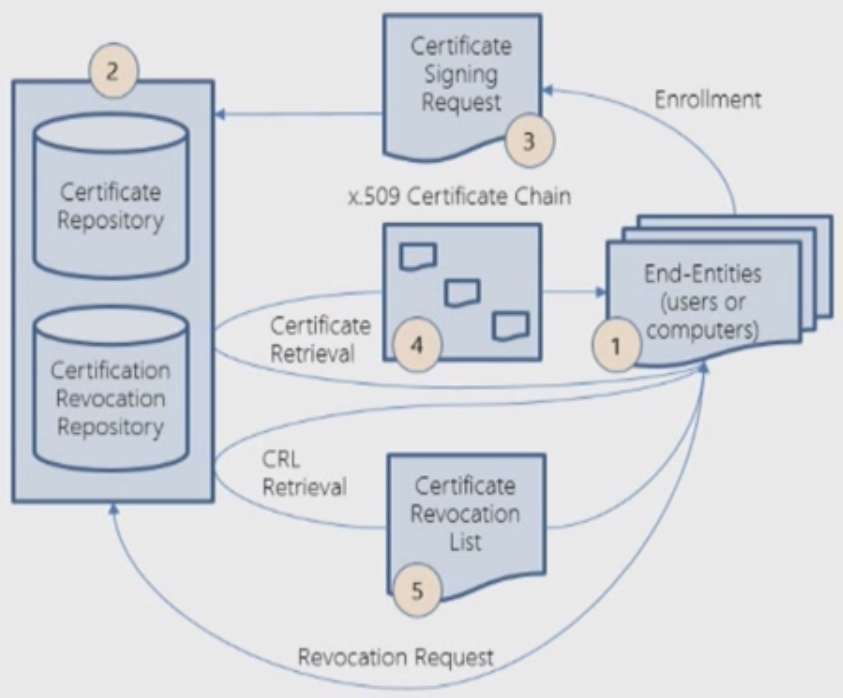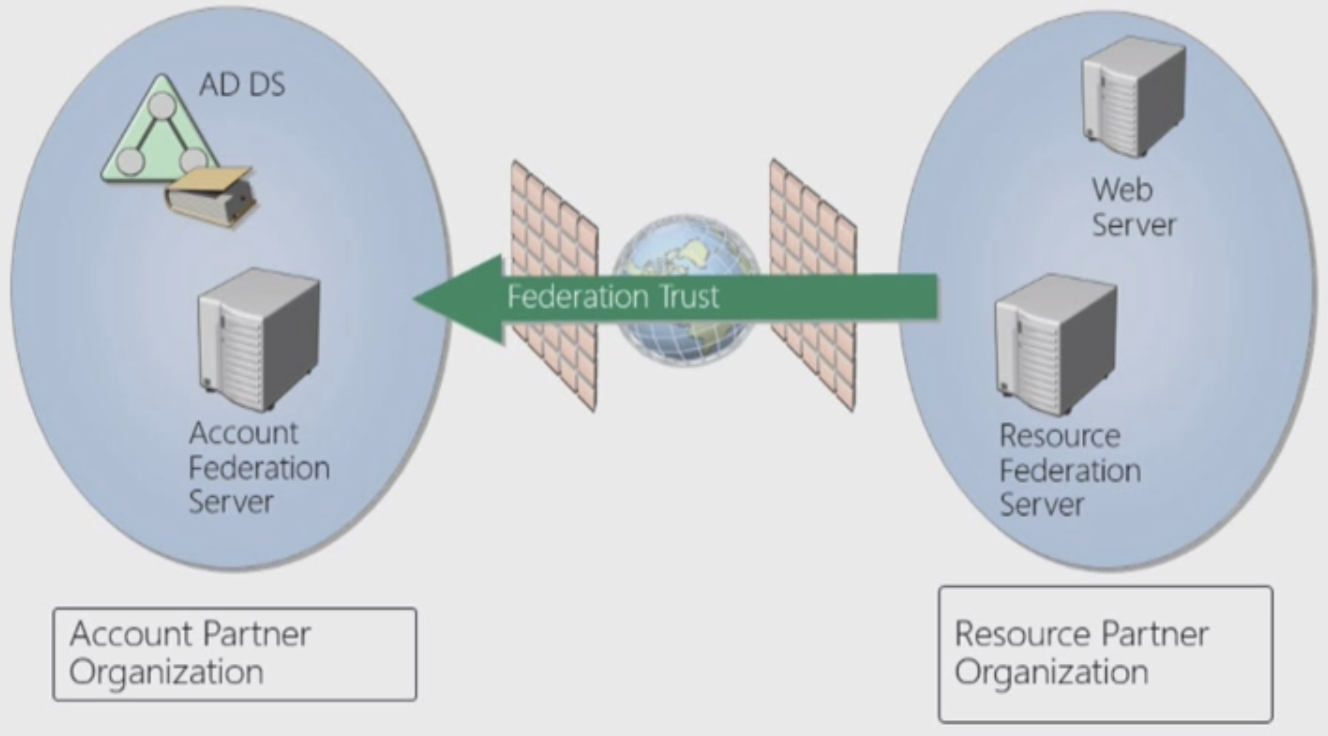Lesson 1 of 6
Main Menu
- Introduction to Active Directory
- Active Directory Domain Services (DS)
- Active Directory Certificate Services (CS)
- Active Directory Federation Services (FS)
- Active Directory Rights Management Services (RMS)
- Active Directory Lightweight Directory Services (LDS)
Introduction to Active Directory
Active directory is a portfolio of technologies used to manage Identity and access for, and to, resources on a network.
- AD Domain Services (AD DS)
- Users, Computers and P0licies
- AD Certificate Services (AD CS)
- Service, Client, Server and User Identification
- Verification of Identification
- AD Federation Services (AD FS)
- Resource access across traditional boundaries
- Allowing of resources in one organization to accessed by security principles in another organization without needed traditional trust mechanisms
- AD Rights Management Services (AD RMS)
- Maintain security of data
- AD Lightweight Directory Services (AD LDS)
- Copy of the structure of AD services
What is Active Directory Domain Services
-
- A directory services is both the directory information source and the service that makes the information available and usable
- Servers
- Mgmt Profile
- Network Info
- Printers
- Shares
- Users
- Account Information
- Privileges
- Profiles
- Policies
- Windows Clients
- Mgmt Profiles
- Network Info
- Policies
- Network Devices
- Config
- QoS Policy
- Security Policy
- Applications
- Server Config
- SSO (Single Sign On)
- App-Specific Directory Info
- Email Servers
- Mailbox Information
- Address Book
- Servers
- A Phone Book
- A directory services is both the directory information source and the service that makes the information available and usable
What does AD DS do
- Scalable, secure and manageable infrastructure for user and resource management
- Stores and manages information about network resources
- Provides support for directory enabled application such as Microsoft Exchange Server
- Allows for centralized management
- Delegation of that management
What is Active Directory Certificate Services
- Microsoft’s implementation of Public Key Infrastructure (PKI)
- PKI is a set of hardware, software, people, policies and procedures needed to create, manage, distribute, use, store and revoke digital certificates.
What does AD CS do?
- AD CS provides customizable services for issuing and managing digital certificates
- Certification Authorities
- CA Web Enrollment
- Online Responders
- Network Device Enrollment Services (NDES)
- Certificate Enrollment Web Service
- Certificate Enrollment Policy Web Service
- Bottom line: “It issues and manages certificates”
What is Active Directory Federation Services
- A software component that facilitates the cross-organizational access of systems and applications
- Allows an IT Administrator to either
- Share my resources out to the world
- Let my users access information in someone else’s organization
What does AD FS do
- The AD FS server role provides simplified, secured identity federation and Web Single Sign On capabilities
- Enabled the creation of trust relationships between two organizations
- Provides access to applications between organizations
- Provides Single Sign On between two different directories for Web-based applications
- Bottom Line: “Log in once and done”
What is Active Directory Rights Management Services
- Active Directory Rights Management Services (AD RMS) is an information protection technology that works with applications to safeguard digital information.
- Author creates content (word doc, email, etc)
- Author can protect that content using AD RMS aware applications (Word, Outlook) from allowing others to
- Forward
- Share
- Etc.
- These protections follow that document anywhere.
What does AD RMS do
- Allows individuals and administrators to specify access permissions to documents, workbooks, presentations, emails, etc.
- Prevent sensitive information from being printed, forwarded or copied by unauthorized people
- Access and usage restrictions are enforced no matter where the information is located.
What is Active Directory Lightweight Directory Services
- AS LDS is a hierarchical file-based directory store
- AD LDS is both the directory information source and the service that makes the information available and usable.
- Similar to AD DS
What is AD LDS
- Lightweight Directory Access Protocol (LDAP)
- Directory service that provides flexible support for directory-enabled applications, without the dependencies and domain-related restrictions of AD DS
- Provide directory services for directory-enabled applications without incurring the overhead of domains and forests
- No requirement for a single schema throughout a forest.
- Bottom line: “It’s an Information Store”


